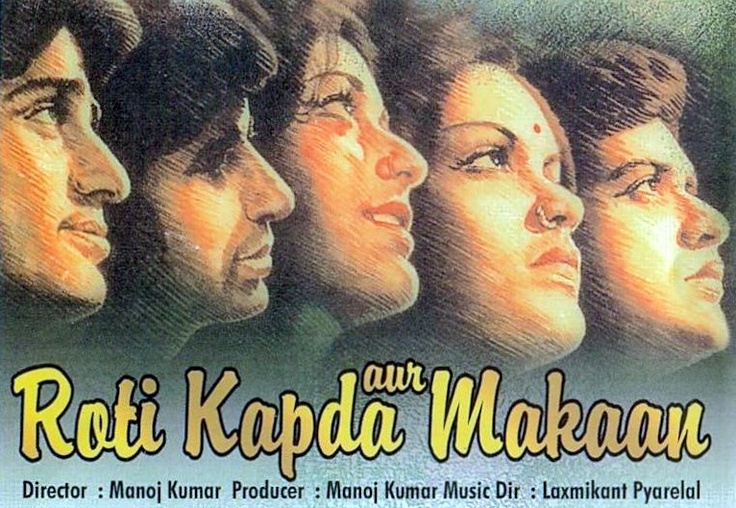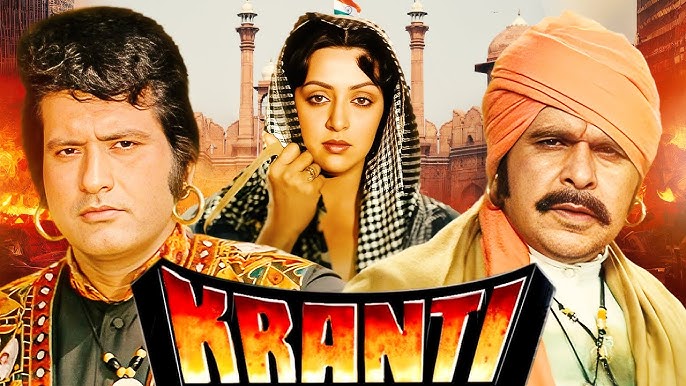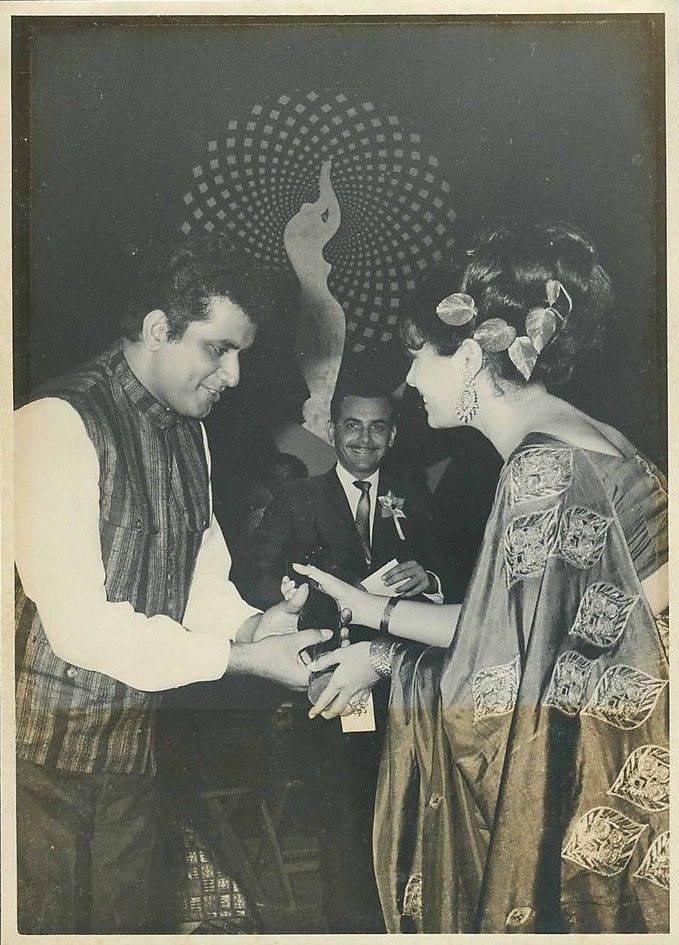Other songs may have moved up the charts, but on every Independence Day, speakers all over blare Mere Desh Ki Dharti from the film Upkar (1967). Even today, for a certain generation, Mr Bharat — the essence of Indian movie heroism– is Manoj Kumar, not macho stars like Akshay Kumar, Ajav Devgn or Vicky Kaushal who act in ‘patriotic’ movies.
When the star of Sixties and Seventies, Manoj Kumar passed away on April 4 this year, today’s generation was not even aware of his films, or his place in Bollywood history. Or if they know his work, it is as spoofs and memes by comedians. That is the out-of-sight-out-of-mind tragedy of show business. He did his last acting role in Maidan-e-Jung in 1995, so in effect, he was away from the public eye for 30 years. Attempts to get his sons Kunal and Vishal Goswami or his brother Rajiv into films failed. The actor-director, who once had a firm hand on the pulse of his audience, slowly faded into oblivion.
Harikishan Giri Goswami was born on July 24, 1937 in Abbottabad (now in Pakistan) and had to move with his family to Delhi when the Partition of India took place. He had graduated from college when his cousin Lekhraj Bhakri came to Delhi for the premiere of his film Tangewali (1956), and told the tall and handsome young man that he looked like a hero. He did actually have the clean-cut Punjabi good looks that went by the label ‘Chocolate Boy’ in the media (Shammi Kapoor, Rajendra Kumar, Sunil Dutt, were a few years senior, Dharmendra was a contemporary.
So, he moved to Mumbai, renamed himself Manoj Kumar – the Kumar suffix being the trend in those days– and made his debut in a small role in his cousin’s film Fashion (1957), singing a song that had the words, Mera Desh Hai Mahaan. Seems prescient now, considering the nationalist fervor of the films he directed later.
He did a few forgettable ‘side roles’ and supposedly, ghost wrote scripts till he got a break as a leading man in Kaanch Ki Gudiya (1961). Success came after a couple of more duds with Hariyali Aur Raasta (1962) and stardom with Woh Kaun Thi (1964). Films like Himalay Ki God Mein (1965), Shaheed (1965), Do Badan (1966) were hits. Even though his films did well, he was accused of aping Dilip Kumar, and developing strange mannerisms like placing his hand on his face and mumbling his lines through his fingers.
It was Shaheed (1965) that set the course of his career. He played the role of Bhagat Singh, in the film that he was said to have done backseat direction, and propelled to success. After the Indo-Pak war of 1965, then Prime Minister, Lal Bahadur Shastri asked him to produce a film to popularise the slogan he had coined, Jai Jawaan, Jai Kisaan.
Manoj Kumar made his debut as director with Upkar, dedicated to Shastri, in which he played a farmer and a soldier, and a patriotic Indian, who not just serves his country, but reforms his straying brother (Prem Chopra). Upkar was a blockbuster, the songs (Gulshan Bawra-Kalyanji-Anandji) were hits, it swept the Filmfare Awards including trophies for writing and direction to Manoj Kumar.

The film that appears melodramatic today, was nationalistic, but not jingoistic; it spoke of pride and love for the country, not hate for the enemy. The success of the film also led him to reduce his acting for other directors and concentrate on his own production company. His next was Purab Aur Paschim (1970), in which he exhorted Indians living in London, to appreciate the culture and values of their native land—Bharat Ka Rehnewala Hoon, Bharat Hi Baat Ki Baat Sunaata Hoon, he sang– heralding the ‘sanskaar’ trope in films and TV shows that came much later. The mini-skirted, smoking-drinking leading lady (Saira Banu) was suitably Indianised. (The plot was reused in the 2007 film, Namaste London, by Vipul Amrutlal Shah, starring Akshay Kumar and Katrina Kaif).

His 1972 film Shor, about a father struggling to get his mute son to speak, was an experiment for him; with the next, Roti Kapda Aur Makaan (1972), a multi-starrer with Amitabh Bachchan, Shashi Kapoor, Zeenat Aman, Moushumi Chatterjee and himself, a high-powered social drama about an educated man struggling with unemployment (a major issue at the time) and trying to stay away from corruption. This film won him his second Filmfare Award for direction.

He acted in films like Beimaan (1972) for which he won a Filmfare Best Actor Award, Sanyasi (1975) and Dus Numbri (1976), that were hits, returning to direction with Kranti (1981), set during the Independence movement, in which he cast his idol, Dilip Kumar and Hema Malini (with whom he formed a successful screen pairing for a while). This could be said to be his swan song as a filmmaker; he produced Painter Babu (1984) to launch his brother Rajiv Goswami, and later Kalyug Aur Ramayan; His son, Kunal was introduced in Kranti and did a few forgettable films but could not make it in Bollywood. The other son Vishal’s debut Bharat Ka Beta, never took off, though he had a brief career as a singer.
Manoj Kumar then directed the deplorable Clerk (1989) which is remembered more for the parodies it engendered; the scene in which the martial music of the Indian National Army got a dying man marching again must be the most ridiculed sequence from Hindi cinema, ever. His last, Jai Hind (1999) sank without a ripple.
Compared to other popular stars of his time, Manoj Kumar did very few films—about 55 as an actor, and many shelved projects—but created a distinctive identity for himself as a filmmaker. Even as a director, his filmography is not vast, but when the movies that were hits, set benchmarks. He obviously knew how to tell a story, but also how to picturise songs, and how weird camera angles could enhance a scene. He also wrote his screenplays, often lyrics and edited them too, so the films he directed had a strong Manoj Kumar stamp.

He was deservedly bestowed with a Padma Shri in 1992, the Filmfare Lifetime Achievement Award in 1999, and the Dadaseheb Phalke Award for contribution to Indian cinema in 2016.








